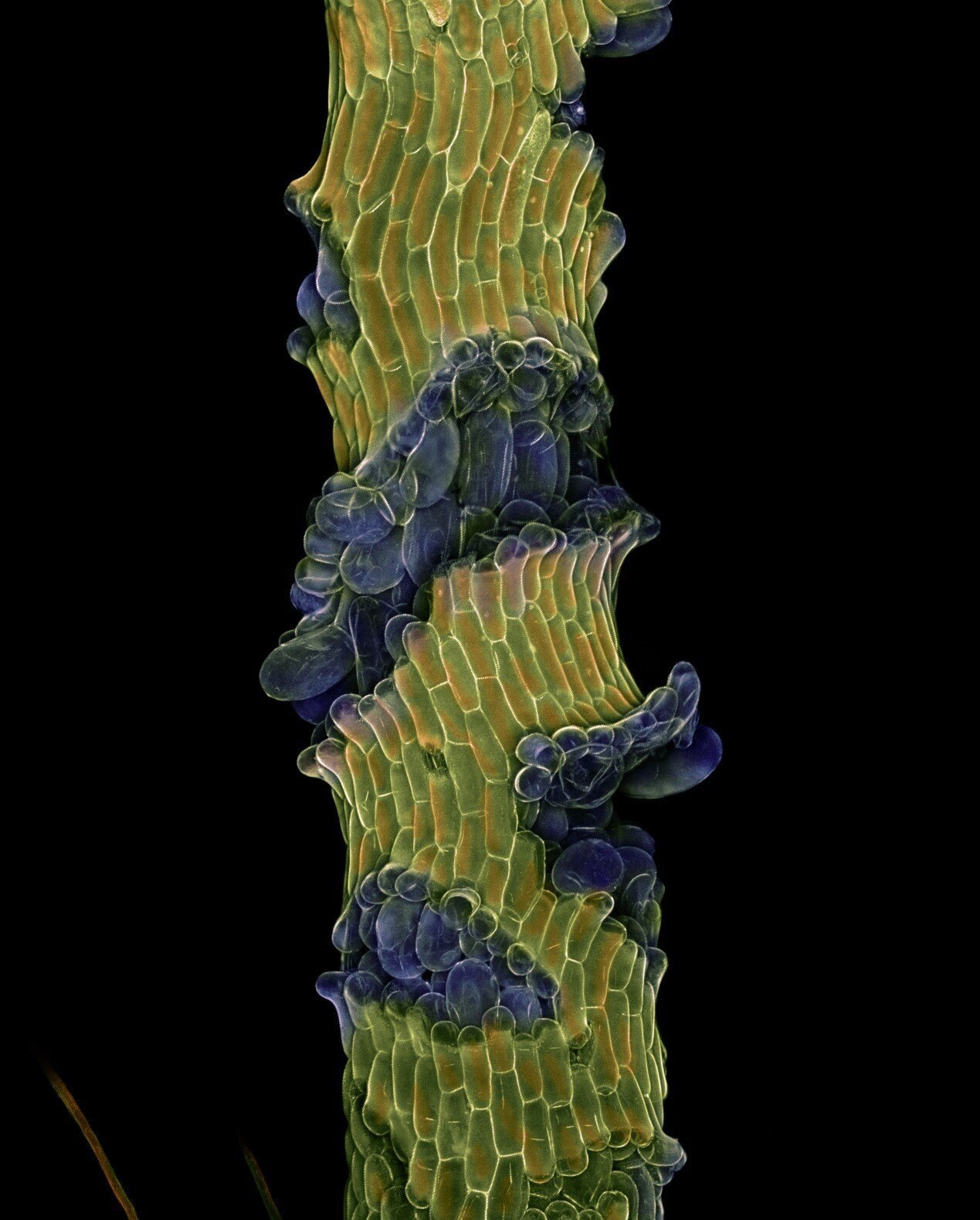Researchers Dr. Robert Kelly-Bellow and Karen Lee, working under Professor Enrico Coen at the John Innes Centre, have made a fascinating discovery regarding the ability of plants to withstand the stresses of growth without cracking. Their study focused on a little-known aquatic plant called Utricularia gibba, which has hollow stems filled with air spaces. Unlike most plants with solid stems, the hollowness of Utricularia gibba’s stems allows the vascular column inside to buckle under stress.
The researchers came across a peculiar observation while studying a dwarf mutant of Utricularia gibba. They noticed that the central column of the mutant was wavy instead of straight. This led them to hypothesize that the wobbly spine was a result of a conflict between the internal tissue and the epidermis, or skin, of the plant stem. Computational modeling conducted by Dr. Richard Kennaway supported this idea.
The team’s findings, published in the journal Science, revealed that only the epidermis of the dwarf mutant wanted to be short, while the internal tissue still desired elongation. This created a buckling effect, resembling a sort of straitjacket. Previously, it was believed that dwarf varieties of plants were smaller overall, but this study showed that it could be just the skin of the stem that is affected.
Further investigations into the Utricularia gibba dwarf mutant uncovered the absence of a growth hormone called brassinosteroid. The researchers theorized that this hormone normally allows the skin to stretch, providing a more flexible “straitjacket” that enables stem elongation.
To test their hypothesis, the researchers used a mutant strain of the model plant Arabidopsis that weakened the adhesive properties between cells. They found that reducing brassinosteroid in these plants caused severe cracking in the stem’s skin due to increased stresses.
The team’s computational modeling, conducted by Professor Richard Smith, suggested that brassinosteroid hormone functions by loosening the fibers in the epidermal cell walls, thereby easing the straitjacket-like effect. This revealed the significant role of the adhesive properties of plant cells, specifically the pectin that binds them together, in coordinating growth.
While previous studies highlighted the molecular signals plants use to coordinate growth, this research demonstrates that the “glueyness” of plant cells is a vital component in this process. The cohesive nature of plant cells allows growth changes in one layer to influence the behavior of other cells.
Dr. Christopher Whitewoods, a co-author from the Sainsbury Laboratory at Cambridge University, emphasized the potential implications of these findings for future research. He speculated that mechanical interactions between cell layers could influence other aspects of plant development, such as the intricate internal patterning of leaves.
These findings have important implications for the understanding of dwarfing varieties of crops like wheat and rice, which are crucial for agricultural advancements. They shed light on how genes control plant growth and offer insights into potential improvements in crop efficiency.
Additionally, the study’s findings may have implications for developmental processes in animals, such as the formation of cracks in crocodile skin and the shaping of the intestine, where mechanical interactions between cell layers are also believed to play a role.
Professor Coen reflects on the significance of this research, noting that while many hypotheses fail to withstand experimental scrutiny, this idea proved to be robust and opened up new avenues of understanding. He emphasizes the excitement of unraveling nature’s secrets and the profound impact such discoveries can have in the scientific community.
Source: John Innes Centre
